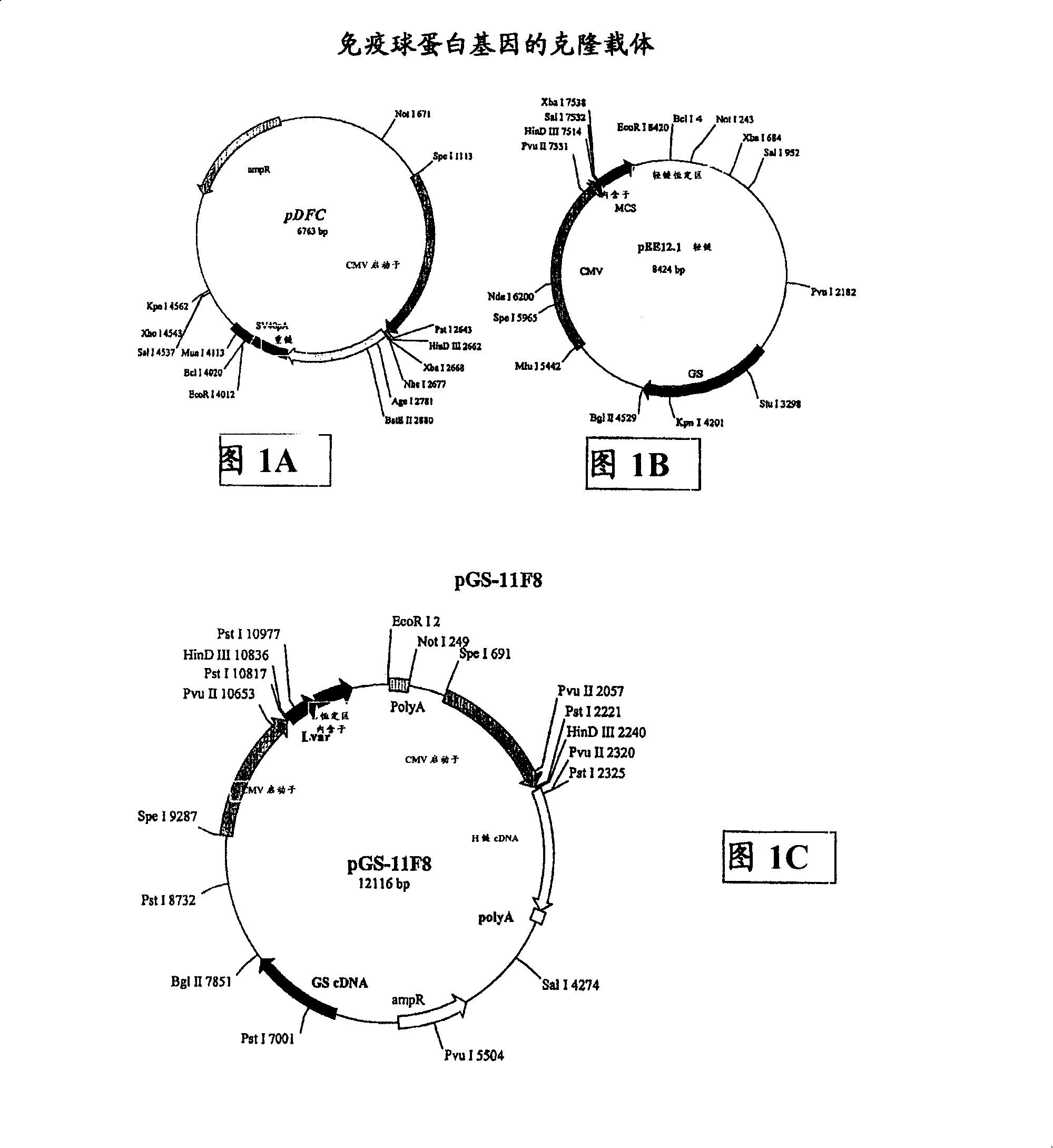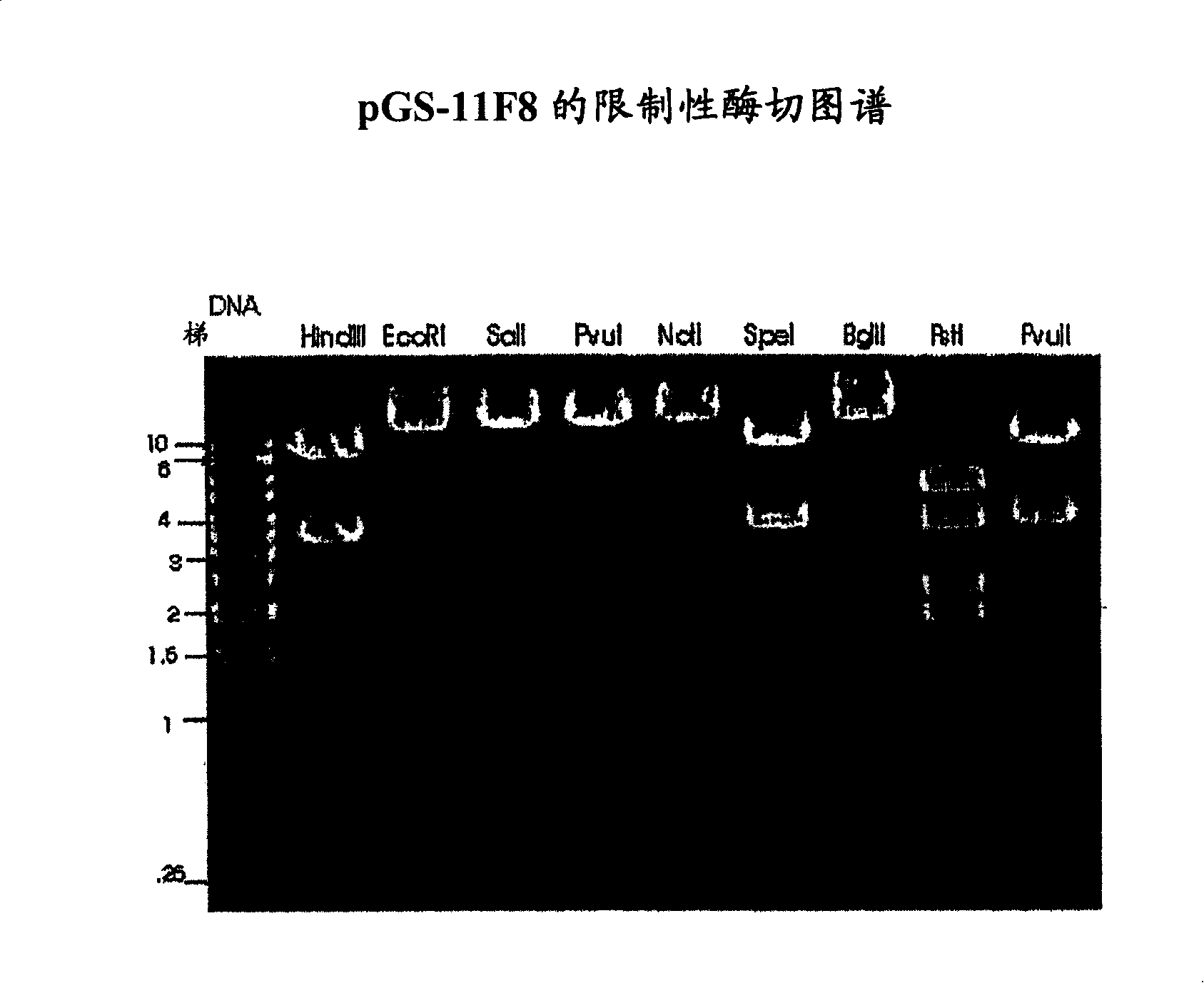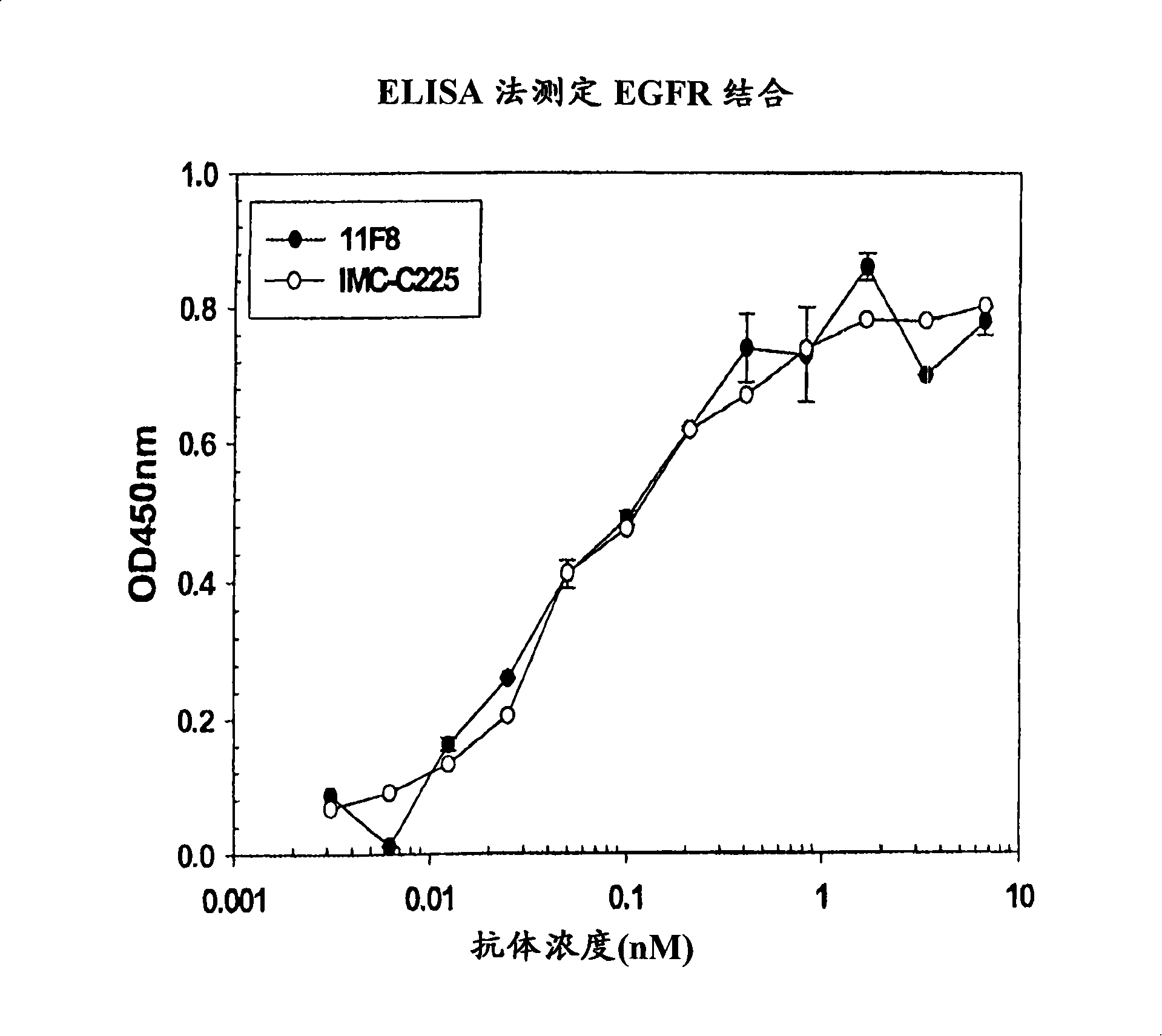Human anti-epidermal growth factor receptor antibody
A human antibody, antibody technology, applied in the direction of antibody, anti-receptor/cell surface antigen/cell surface determinant immunoglobulin, skin diseases, etc., can solve the problem of losing the precise control of normal proliferation and so on
- Summary
- Abstract
- Description
- Claims
- Application Information
AI Technical Summary
Problems solved by technology
Method used
Image
Examples
Embodiment 1
[0111] Example 1 - Isolation of Anti-EGFR Antibody
[0112] Briefly, the human antibodies were obtained from a human naive Fab phage library obtained from Dyax, Cambridge, MA by biopanning with soluble human EGFR isolated from EGFR positive tumors. The naive Fab phage library containing the heavy and light chain variable regions of antibodies produced by human cells (peripheral B lymphocytes) was constructed from naive naive human, tumor-free spleen cells obtained from a gastric cancer patient. A first round of amplification was performed by using V gene-specific forward and reverse primers, and these VH and VL genes were cloned into separate vectors (WO 00 / 70023).
[0113] The Fab library stock was cultivated to the logarithmic growth stage, rescued with M13K07 helper phage, and amplified overnight at 30°C in 2YT AK medium (2YT containing 100 μg / ml ampicillin and 50 μg / ml kalamycin) . Phage preparations were precipitated with 4% PEG / 0.5M NaCl and resuspended in 3% skim milk...
Embodiment 2
[0117] Example 2 - Expression and purification of soluble Fab fragments
[0118] The plasmid containing the gene encoding 11F8Fab was used to transform the non-suppressor E.coli host HB2151, and the expression of the Fab fragment in HB2151 was carried out in a medium containing 1 mM isopropyl-1-thio-β-D-galactopyranoside (IPTG , Sigma) in 2YTA medium, induced culture at 30°C. Periplasmic extracts were prepared by resuspending cell pellets in 25 mM Tris (pH 7.5) containing 20% (w / v) sucrose, 200 mM NaCl, ImM EDTA, and 1 mM PMSF, followed by incubation at 4°C with gentle shaking for 1 hour things. After centrifugation, the soluble Fab protein was purified by affinity chromatography on a protein G column according to the manufacturer's (Amersham Pharmacia Biotech) method.
Embodiment 3
[0119] Example 3 - Construction of human anti-EGFR IgG1 antibody
[0120] Human anti-EGFR Fab was constructed into a complete IgG1. A selected Fab candidate, C11F8, was confirmed from a human naive phage display library to have high-affinity binding and ligand-blocking activity for human EGFR (ErbB). The genes encoding the 11F8 Fab light chain variable region (SEQ ID NO: 15) and heavy chain variable region (SEQ ID NO: 7) were amplified by PCR and cloned into human IgG1 constant In the expression vector for the region, this system was obtained from Lonza Biologies, Inc.
[0121] Two-step PCR amplification was performed using the Expand PCR kit (Boehringer Mannheim, Inc.) with the primers listed in Table 3 according to the manufacturer's instructions.
Table 3. PCR amplification primers
[0122] Briefly, the PCR products of the heavy and light chains were prepared using the C11F8Fab plasmid as a template, using forward and reverse primers for the heavy chain (C11F8HF and ...
PUM
 Login to View More
Login to View More Abstract
Description
Claims
Application Information
 Login to View More
Login to View More - R&D
- Intellectual Property
- Life Sciences
- Materials
- Tech Scout
- Unparalleled Data Quality
- Higher Quality Content
- 60% Fewer Hallucinations
Browse by: Latest US Patents, China's latest patents, Technical Efficacy Thesaurus, Application Domain, Technology Topic, Popular Technical Reports.
© 2025 PatSnap. All rights reserved.Legal|Privacy policy|Modern Slavery Act Transparency Statement|Sitemap|About US| Contact US: help@patsnap.com



